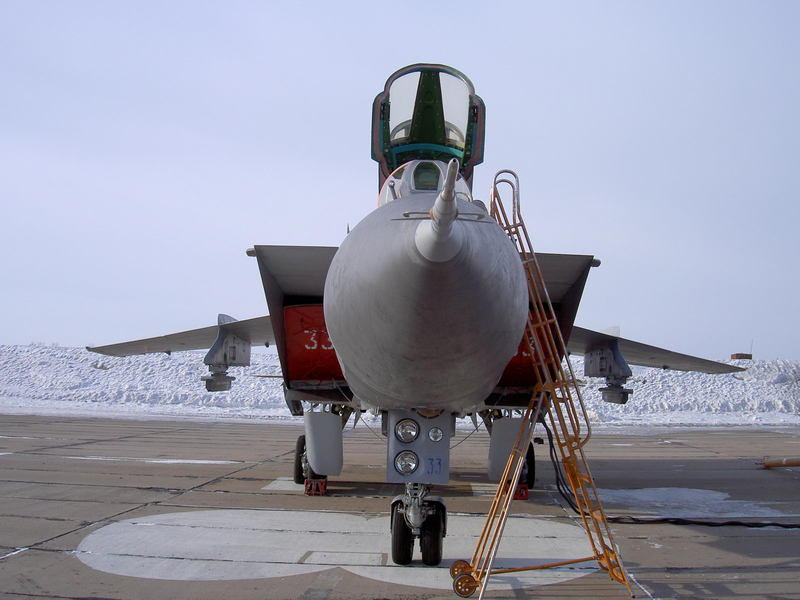During Lt. Gen. Viktor Bondarev’s conference, during which information on PAK-DA bomber was relased to the public, the Air Force Commander also mentioned that Russia has started working on MiG-31 replacement.
It is an interesting phenomenon that the Russians still aim at single-purposed specialized designs, whereas the US designs are predominantely multi-role.
Bondarev said that the Russian Federation would need a fighter interceptor for defense forces that would be compliant with the requirements of the modern battlefield. Taking into account the fact, that the territory of Russia is extremely vast, it is crucial to have efficient plane which could be able to operate effectively in the huge airspace.
The Soviet designers were working on a Multifunctional Distant Interceptor concept named Product 7.01 in the ’80s, but ultimately the project was abandoned.
The concept was developed at the same time the MiG 1.44 prototype was created. Nevertheless the details of this project are not widely known. In 1993 it was considered to become a high-speed business jet.
The MiG-31 is the derivative of the MiG-25, a Cold War icon, even though often believed to be one of its variants.
This is a common mistake as the MiG-31 is a two-seater build using a completely different airframe, and for a completely different purpose. The second crew member plays a role of WSO (Weapon System Operator).
The MiG-25 was built as a high-speed, high-altitude interceptor, capable of reaching the speed of Mach 3.2. Such technical specification would allow the Foxbat to be a plane able to combat the American B-58 and B-70 bombers. Secondly, that made the airframe of the MiG-25 quite strong, what made it a good base for the Foxhound.
The Foxhound is in service since 1983, with a purpose of patrolling the underprotected areas.
The MiG-31’s adversary has a quite different character, as it was designed to be a measure against the B-1B bomber, which was designed to operate at low level, below the radar coverage. Hence the MiG-31 has quite good low-level capabilities (which MiG-25 does not) and is equipped with an advanced radar with look-down-shoot-down capability needed to detect low-flying bombers, and data bus, allowing for coordinated attack with other fighters.
What is more, unlike the Mig-25, the Foxhound features a HUD display. Regarding the low-level characteristics, the MiG-31 is not a dogfighter. It is a high-performance aircraft, similarily to the MiG-25, which exploits speed and altitude to its main advantage.
Despite the fact that the Mig-31 is quite obsolete, it is still one of the most amazing interceptors ever bulit, with top speed of Mach 2.83 and a range of 1,450 km. Being a Mig-25 derivative it has high supersonic cruise speed, and can fly higher than the incoming fighter escort.
According to Bondarev modernizing all of the Russian MiG-31s to BM standard, which includes new radar with a range of 320 km, new avionics and fire control system would cost over 50 billion rubles.
In other words it is not an affordable course of events. Nevertheless the remaining 60 of of MiG-31s are to be modernized by Sokol aviation facility.
Top image credit: walkarounds.airforce.ru









